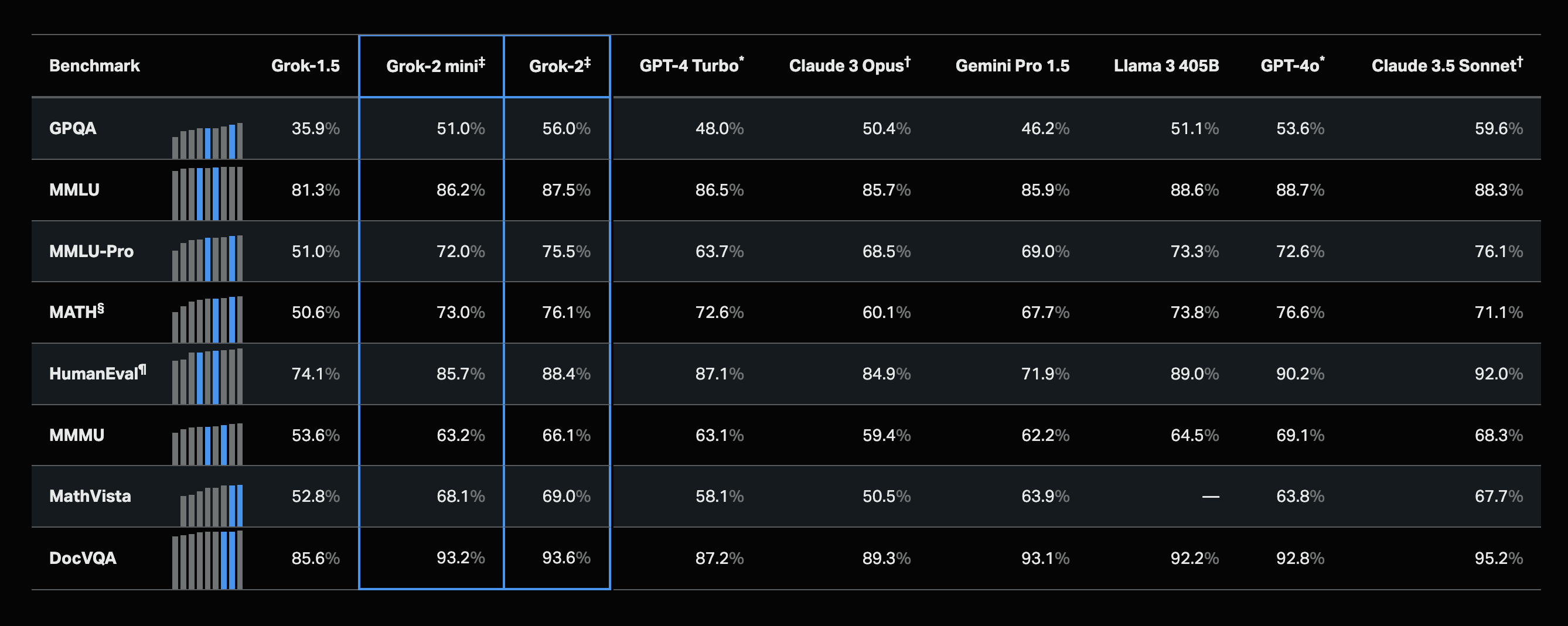Grok









Grok is a general purpose model that can be used for a variety of tasks, including generating and understanding text, code, and function calling.
Intended Use
Text and code: Generate code, extract data, prepare summaries and more.
Vision: Identify objects, analyze visuals, extract text from documents and more.
Function calling: Connect Grok to external tools and services for enriched interactions.
Performance

Limitations
Context: Grok may struggle with maintaining context over extended conversations, leading to inconsistencies in long interactions.
Bias: As Grok trained on a large corpus of internet text, it may inadvertently reflect and perpetuate biases present in the training data.
Creativity Boundaries: While capable of creative outputs, Grok may not always meet specific creative standards or expectations for novel and nuanced content.
Ethical Concerns: Grok can be used to generate misleading information, offensive content, or be exploited for harmful purposes if not properly moderated.
Comprehension: Grok might not fully understand or accurately interpret highly technical or domain-specific content, especially if it involves recent developments post-training data cutoff.
Dependence on Prompt Quality: The quality and relevance of the output of Grok are highly dependent on the clarity and specificity of the input prompts provided by the user.
Citation
https://x.ai/blog/grok-2
 All models
All models